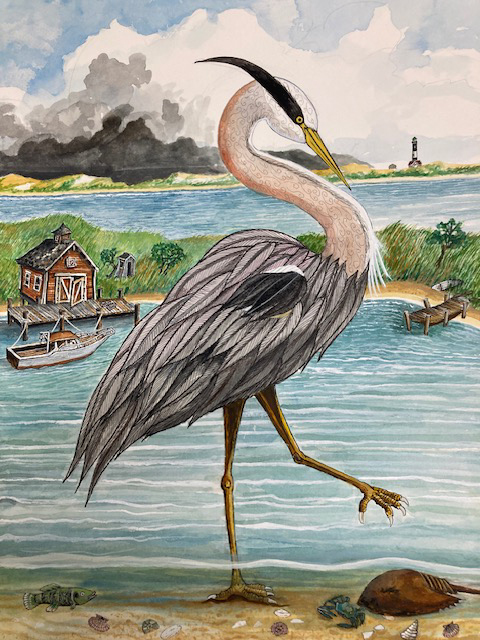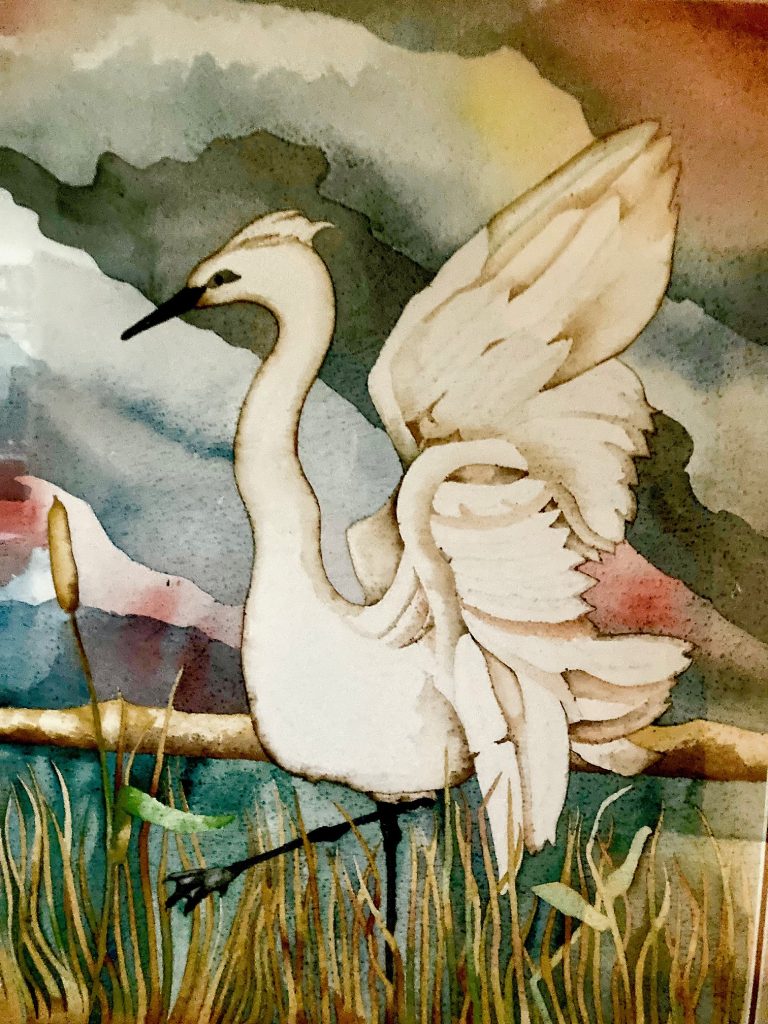I wrote an article years ago concerning the wholesale destruction of shore birds on Long Island’s Great South Bay during the 19th and early 20th Century. Many shorebird species were decimated due to the fashionable use of various feathers in women’s hats during that period. I daresay that if the women who wore these hats as “High Fashion” knew how they were procured, I can bet you a seated liberty dime from 1880 that they would have demanded the killing stop. Then there was the “Market Gunning” for duck meat which was considered a delicacy. They were also slaughtered to near extinction. When roving the bays and wetlands in the 1950s, it was rare for me to see an egret, blueSlowly, the bay birds began to recover. Various species of seagulls rebounded quickly partially due to the great mountains of garbage building in Oceanside, Merrick, Brookhaven, etc. The first great blue heron I saw was in 1957 in the Jamaica Bay wetlands where we played as kids. We scared it and it sure scared us as it fished a tidal creek. The giant bird let off a blood-curdling gawkish cry as it ascended and almost took my little brother with him in his long yellow beak. It probably wouldn’t have been a bad thing, as I see it.

My first sighting of a snowy egret was as I pulled into the old Charvin Fishing Station, Freeport, in the early seventies. It was hunting the shore of the meadow where the bait cottage was. By the 1980s these beautiful birds, in all their beautiful variances, were on a healthy rebound. Snipes and sandpipers also returned to stalk the shores along with birds in the tern family. The beautiful skimmers soon came back in force and every clean water cove and bay became aerial show places as they dipped their lower orange beaks into the water to attract their next fresh meal. By the end of the 80s, the ospreys began their comeback due to the outlawing of DDT, which had made their eggshells too fragile to survive at a sustainable rate. The fact of the matter is the resurgence of the osprey has reached unprecedented numbers. The great grey owls and other owls that frequent the wetlands suffered the same fate as the osprey but made a comeback.
Generally, from the mid-70s until last summer (2022) there was a rising population of certain shorebirds which was promising. When you were on your boat in one of our bays or hiking a wetland park or shore, you could be treated to some of the best seabird viewing around. Tree and barn swallows were flocking on the summer cottage-inhabited South Bay islands. They would sit in groups of fifty or more in dead trees and old telephone wires. They would nest under the old bay houses and in hollowed trees. There were decent quantities of every shorebird. It wasn’t like before the gunning of the 19th Century but considering that the population of birds across America had been reduced by billions due to habitat destruction, Things were looking pretty good.
The spring of this year seemed even more promising. Robins, blackbirds, and catbirds arrived early. We had the first real spring in more than a decade that was following a very warm winter but something was different. My neighbor Ken pointed out that there were no swallows. I told him I had seen a couple but the rest never arrived.

The Osprey arrived and continued to occupy more and more nests put up by advocates. The egrets never arrived in any quantity. You’d see one here and there and the roost on Oak Island was short on birds. So far, I have seen only one blue heron on Oak and one Bellmore. Otherwise-Zilch! The oyster crackers and terns were rarely seen on the bay. I have seen a few in the cove behind my house in Bellmore.
Taking my boat from Bellmore to Oak on Sept 7, there were few birds in the marshes though by the third Wantagh bridge, some least terns were working a school of blues scoffing down bunker. However, considering the havoc the blues were creating, the number of terns and even gulls were anemic at best. Walking along the surf you can’t help feeling a sense of aquatic aviary distress. Gulls used to be an annoyance, there were so many. Now it is a joy to see some gathered, even if it’s around a spilled-over Robert Moses State Park garbage can.
So, what gives here? Are we facing slow mass shorebird extinction? Have migratory patterns and paths due to the ‘’new normal” hyper-warm seasons and irregular incidences of rainfall and drought? Has the fight against mosquitoes finally tipped the natural balance? Are too many predator osprey driving birds away? How about the slow disappearance of bees? (A favorite swallow food) Have these wonderful birds, struggling to survive in a continually adverse world, given up on Long Island and moved to more sensibly balanced environments?
I wish I had an answer and a solution because I love shorebirds, seabirds, and raptors way too much to see them disappear! That, for me, would be one sorry-ass world. I intend to keep tabs on what I and others see, read, investigate, sense, and know, while advocating to save as much of the natural world left on Long Island including its birds, animals, farms, wetlands, woodlands, bays, pine barrens, parks and historical landmarks, before the greedy developers, hand in hand with politicians (The greatest, most profitable marriage in history) take it all and move away!
We must all get off our butts and do our part. The loss of birds is a dire warning as predicted by Carson McClure in “Silent Spring” over a half-century ago! Write to your representatives, and join advocacy groups like Save the Great South Bay, Operation Splash, Peconic Land Trust, LI Audubon Society, The Pine Barrens Association, and The Long Island Sierra Club. Pick one! Make up your own if you want! Maybe even crack open your dusty wallet and donate! But seriously, for your children’s sake, act before it’s too late.
